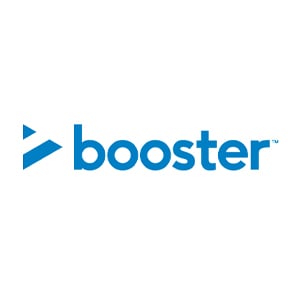In our last blog, Rach and I talked about the exciting updates and refresh of mybooster.
Some of those changes were in preparation for the release of our new budgeting tool, mybudgetpal. Exciting!
So now we’re going to dive into the what, the why and the how behind the creation of mybudgetpal and why we’re opening it up to all New Zealanders.
Being a finance company, you may think it’s a no-brainer that we would create a budgeting tool. We’ve been working in finance for 20+ years but it’s only been recently that we felt we could really do budgeting justice – creating a tool that is based on our collective experiences and shaped by the many lessons we have learnt.
mybudgetpal is the result. A budgeting app that is simple to understand, easy to use and does most of the hard work in creating a budget for you.
Helping all New Zealanders make sense of money is our mission. We’d always planned to make our budgeting app available for everyone later this year but given everything that’s happened over the last couple of months, and because we know that some Kiwis are facing uncertain times, we changed tack and decided to open up access to mybudgetpal to everyone, as soon as we could.
We want all Kiwis to have access to our budgeting tool, to help them make more sense of their money. That’s also why we’ve made the app free for everyone – Booster member or not.
Budgeting sometimes gets a bad rap.
Mention budgeting, and I’m pretty sure it’s met with a ‘yeah, nah’ from most people. It’s in the same camp as ‘diet’. It can be hard to follow, restrictive, boring, and may feel like it’s been designed to punish you!
To be honest, if you follow an extreme version of either, that could be your reality. But what if a lot of the hard work involved in creating your budget was done for you, allowing you to quickly focus on the key spending and savings goals that matter to you?
Sound too good to be true?
That’s where mybudgetpal steps in. mybudgetpal can help turn a daunting and difficult process into a much simpler exercise.
As we started to plan what to build in our budgeting app, we realised we needed to turn the usual budgeting process on its head. Instead of trying to figure things out like 'annual expenses', 'income' and 'how to accrue for the future' straight off the bat, we started looking at how to build a budget from the bottom up.
Let’s start at the beginning
The more people we spoke to – and the more we thought about our own habits – the more we realised that not many of us knew exactly where we really spend our money day to day or pay to pay. So, we figured that getting to grips with this info should be the first step in building your budget. Doing this helps achieve a couple of things:
- You can see what you’re dealing with, and
- You can work out if you’re managing to keep your expenses under control or not (i.e. spending less than you earn), and
- You can see if there are any bumpy bits you might need to plan for (eg, do you spend more at certain times of the week, month or year?), and
- Are you able to cover all your expenses all, some or none of the time?
Getting this kind of baseline information is gold in helping you plan your way forward.
Get to know your spending behaviour
Go deeper to identify where you can make positive changes
Use mybudgetpal your way so it works for you
Investigate a little more
Once you get more familiar with you’re spending in general, you can start to dig a little deeper by looking at where your money’s going by category. How much are you spending in certain areas vs what you want to spend? Can you see where you might be going over your limit or having a budget blow out?
mybudgetpal will auto-suggest categories for you and a spending limit based on your history. You don’t need to stick to the suggested limit like glue and can edit the amounts whenever you like, so mybudgetpal keeps up with your ongoing situation.
There are three main budgeting groups, set to default as personal, household and core expenses, that you can rename. You can also move your categories between your budgeting groups as you like. mybudgetpal has been designed so that you can use all, or some, of the features depending on what’s most useful to you.
Let’s say your focus is on keeping an eye on what you spend vs what you earn, then you might love the colourful pie graphs. All the other information will still be there, but you don’t HAVE to do anything with it. Personally, I focus most on the pie graphs and get a real kick if I can see that I’ve spent less than I’ve earned.
mybudgetpal’s calendar also helps remind me of upcoming expenses I normally completely forget about. These used to get me every time!
In summary, you can approach your budgeting plan like this:
- First, get to know your income and expenses
- Then understand your main spending categories: How much are you spending on these categories? How much do you want to spend?
- Bundle these categories into up to 3 main buckets to simplify your budget
- Don’t forget about upcoming costs in your calendar!
Start by doing some of it and then build up to doing all of it. Let us know which features you get most value from!
Try it out
Whether you’ve tried and failed in the past, or never tried, we really hope mybudgetpal gets you onboard with budgeting. Like any good friend, it doesn’t judge; it supports you by telling you the truth and guiding you along the way.
We know that being in control of your money is key to your financial future. And having a budget is a vital part of that. If you’re not a Booster member, you can set up your free mybudgetpal account. Booster members can find mybudgetpal in mybooster.
So have a go and tell us what you think! We’d love to know so we can keep on making it better and better and make budgeting less ‘yeah, nah’ and more ‘heck yeah!’


